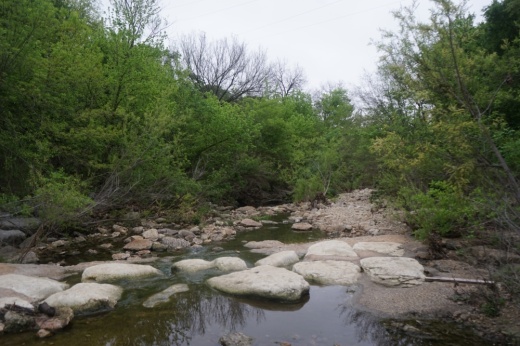Austin’s water pipes
The pipe that broke near Shoal Creek Boulevard and Bull Creek Road was built in 1954; however, it was the first main break to occur in that section, according to Austin Water.
Austin’s pipe network consists of 3,731 miles of mains. Austin Water had 395 main leaks in 2022, and 644 in 2021, which was considered “unusually high” due to Winter Storm Uri.
In recent years, Austin Water averages 11 failures per 100 miles of water pipe per year, which is below the industry standard of 14 breaks, according to Austin Water.
Moving forward, Austin Water said they will be assessing the section of pipes near Shoal Creek as part of their Renewing Austin Program to replace aging infrastructure.
The environmental impact
The fish in Shoal Creek were killed due to an influx of chlorine entering the creek, said Andrew Clamann, an environmental scientist for the Austin Watershed Protection Department. The concentration of chlorine in the creek was safe for humans, turtles, birds and other wildlife; however, it is harmful to fish due to their sensitive gills, Clamann said. When exposed to chlorine, fish experience necrosis, or cell death, and respiratory difficulty.
Using data that was collected between 2015-2018 during creek drainings, WPD estimated that the water main break killed 0.07% of fish in all of Shoal Creek and about 2% of fish in the general area downstream of the water break. About 35% of fish in the immediate vicinity were killed.
The fish community will likely repopulate within a year, depending on certain environmental factors such as floods and droughts, Clamann said. The fish community in Shoal Creek are resilient, as they have had to survive droughts and other impacts of living in the middle of a highly populated area, Clamann said. The break most likely killed many bugs and microorganisms as well, Clamann said, but due to their fast reproduction rates, those populations will bounce back in a matter of weeks.
The water break released chlorinated drinking water into Shoal Creek; however, if it had been a wastewater spill or a chemical spill, the environmental outcomes could have been much worse, Clamann said.
WPD has a captive breeding facility near Zilker Park for the highly sensitive Barton Springs salamander in the event a main break occurred at Barton Springs and wiped out the population.
Why did The Watershed Protection Department change their original estimate of dead fish?
The Watershed Protection Department originally saw 30 dead fish after the water line break at Shoal Creek on March 14. However, the department later released an updated statement announcing they found about 300 dead fish along the creek, as a storm pushed debris and more dead fish to an inlet, allowing staff to see “the full extent of the impact.”
Getting an accurate picture of how many fish died due to the main break can be difficult, as many factors are at play, Clamann said.
“Whenever you look in the creek, it's just a snapshot in time,” Clamann said.
Fish swimming downstream from the main break might not have died immediately. Further, dead fish sink first before the body fills up with bacteria and gas, causing it to bloat and float to the surface.
WPD’s final number may still be an underestimate, as dead fish could have been eaten by raccoons, turtles, birds and other wildlife before being counted by officials, Clamann said.
“It's just an estimate,” Clamann said. “It's the best professional judgment at the time of observation. And that will absolutely definitely change within a day up or down.”





